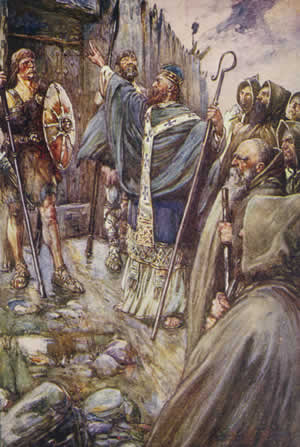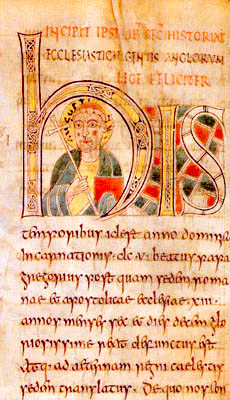Celtic Christianity
Celtic Christianity refers to the early medieval Christian practice that developed in the Celtic regions of the British Isles and Brittany. This form of Christianity is often associated with the distinctive practices and traditions that emerged in these areas, particularly during the early Middle Ages.
Origins and Development[edit | edit source]
Celtic Christianity began to take shape in the 4th and 5th centuries, following the arrival of Christianity in the British Isles. The spread of Christianity in these regions was significantly influenced by figures such as Saint Patrick, who is credited with converting much of Ireland to Christianity, and Saint Columba, who played a key role in the Christianization of Scotland.
Distinctive Features[edit | edit source]
Celtic Christianity is often noted for its unique practices and traditions, which include:
- **Monasticism**: Monastic communities played a central role in Celtic Christianity. Monasteries such as Iona Abbey and Lindisfarne were important centers of learning and missionary activity.
- **Liturgical Practices**: The liturgical practices of Celtic Christianity had distinctive elements, including the use of a unique liturgical calendar and specific rites.
- **Art and Manuscripts**: The production of illuminated manuscripts, such as the Book of Kells, is one of the most celebrated aspects of Celtic Christianity. These manuscripts are renowned for their intricate designs and artistry.
- **Missionary Work**: Celtic missionaries were instrumental in spreading Christianity throughout the British Isles and into continental Europe. Notable missionaries include Saint Aidan and Saint Columbanus.
Influence and Legacy[edit | edit source]
Celtic Christianity had a profound influence on the development of Christianity in the British Isles. Its monastic tradition and missionary zeal contributed to the spread of Christian teachings and practices. The artistic and cultural achievements of this period, particularly in manuscript illumination and metalwork, continue to be celebrated today.
Related Pages[edit | edit source]
- Saint Patrick
- Saint Columba
- Iona Abbey
- Lindisfarne
- Book of Kells
- Saint Aidan
- Saint Columbanus
- Christianity in Ireland
- Christianity in Scotland
- Christianity in Wales
See Also[edit | edit source]
This article is a Christianity-related stub. You can help WikiMD by expanding it!
Search WikiMD
Ad.Tired of being Overweight? Try W8MD's physician weight loss program.
Semaglutide (Ozempic / Wegovy and Tirzepatide (Mounjaro / Zepbound) available.
Advertise on WikiMD
|
WikiMD's Wellness Encyclopedia |
| Let Food Be Thy Medicine Medicine Thy Food - Hippocrates |
Translate this page: - East Asian
中文,
日本,
한국어,
South Asian
हिन्दी,
தமிழ்,
తెలుగు,
Urdu,
ಕನ್ನಡ,
Southeast Asian
Indonesian,
Vietnamese,
Thai,
မြန်မာဘာသာ,
বাংলা
European
español,
Deutsch,
français,
Greek,
português do Brasil,
polski,
română,
русский,
Nederlands,
norsk,
svenska,
suomi,
Italian
Middle Eastern & African
عربى,
Turkish,
Persian,
Hebrew,
Afrikaans,
isiZulu,
Kiswahili,
Other
Bulgarian,
Hungarian,
Czech,
Swedish,
മലയാളം,
मराठी,
ਪੰਜਾਬੀ,
ગુજરાતી,
Portuguese,
Ukrainian
Medical Disclaimer: WikiMD is not a substitute for professional medical advice. The information on WikiMD is provided as an information resource only, may be incorrect, outdated or misleading, and is not to be used or relied on for any diagnostic or treatment purposes. Please consult your health care provider before making any healthcare decisions or for guidance about a specific medical condition. WikiMD expressly disclaims responsibility, and shall have no liability, for any damages, loss, injury, or liability whatsoever suffered as a result of your reliance on the information contained in this site. By visiting this site you agree to the foregoing terms and conditions, which may from time to time be changed or supplemented by WikiMD. If you do not agree to the foregoing terms and conditions, you should not enter or use this site. See full disclaimer.
Credits:Most images are courtesy of Wikimedia commons, and templates, categories Wikipedia, licensed under CC BY SA or similar.
Contributors: Prab R. Tumpati, MD







